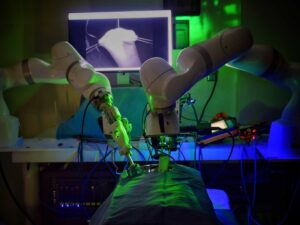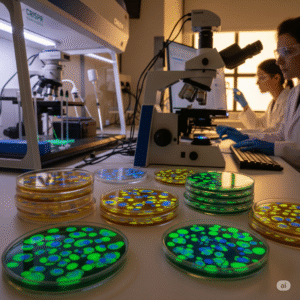Sometimes the most exciting breakthroughs start in your own backyard. Researchers led by McMaster University discovered a potent new antibiotic called lariocidin in soil from a technician’s garden. This molecule—shaped like a lasso—sets itself apart by targeting bacterial ribosomes in a completely new way and shows no toxicity to human cells. Pretty cool, right? (CIDRAP; Chemical & Engineering News)
The Dirt on Lariocidin
The team grew soil bacteria for nearly a year, giving rare microbes a chance to shine. Among them was a strain of Paenibacillus producing lariocidin, a lasso peptide that stops bacteria by messing with protein-making ribosomes. It wiped out tough pathogens like drug-resistant E. coli and tuberculosis-related species, and worked in mice without harming human cells. That’s huge. (CIDRAP; Chemical & Engineering News)
AI Joins the Hunt
Meanwhile, MIT researchers are using generative AI to design brand-new antibiotic compounds—some already killing MRSA and drug-resistant gonorrhea in tests. It’s a high-tech complement to the old-school method of growing microbes in dirt. Together, they form a powerful one-two punch. (MIT News)
Why This Matters
With antibiotic resistance rising and 4 to 5 million deaths linked to it every year, lariocidin offers fresh hope—with a new mechanism to boot. Plus, AI approaches may fast-track design of more of these novel drugs. It feels like a turning point in the superbug fight.
Sources:
CIDRAP (lariocidin discovery),
Chemical & Engineering News (lasso antibiotic details),
MIT News (AI-designed antibiotics)




